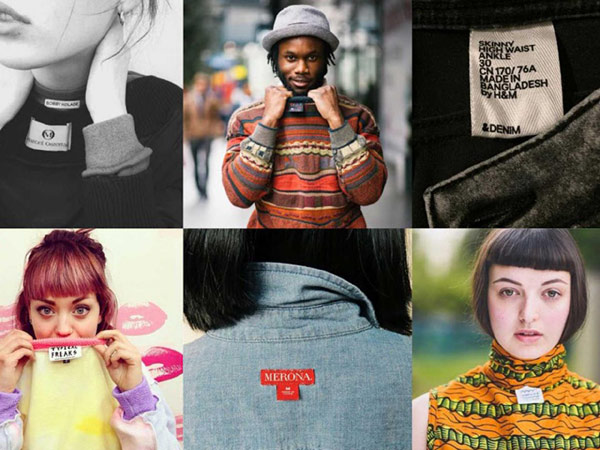当前位置: Language Tips> 双语新闻
The true cost of 'fast fashion': why #whomademyclothes is trending this week

Fashion and politics do not make the happiest of bedfellows. For all its virtue signalling, a system based on inequality and insecurity – that’s the fashion business – has little room for genuine compassion. However, last week the beneficiaries of sweated labour are being asked to examine their consciences – and their order books – as part of Fashion Revolution Week.
在时尚和政治领域不会有愉快的共事者。由于它所有的长处特点,时尚行业,这个建立在不公平和不稳定基础上的系统,是没有太多的同情心的。然而,作为“时尚革命周”的一部分,血汗劳动的受益者们在上周被要求进行良心测试,他们的订货单也要接受审查。
This is a global response to the collapse of the Rana Plaza factory complex in Bangladesh that killed 1,134 people and injured 2,500 more, on 24 April 2013. And as well as a “label selfie” campaign on social media, it has already provoked a special Fashion Question Time in the House of Commons, hosted by Labour MP Mary Creagh, at which the industry was urged to come clean about its foreign suppliers and help to clean up the iniquitous conditions under which their workers are hired.
这算是对2013年4月24日发生在孟加拉国的拉纳广场工厂大楼坍塌事件的全球性回应,这场事故造成1134人死亡,至少2500人受伤。社交媒体上的“标签自拍”运动也在工党议员玛丽•克里奇主持的下议院中引起了一场关于“时尚问题时代”的辩论,这场辩论要求时尚业把国外供应商全部公布出来,也要帮助改善雇佣工人的不公平条件。
The disaster graphically demonstrated the true cost of quickly changing trends, or “fast fashion”, for high-street brands such as Gap and Benetton: dangerous working conditions, long hours and little pay for the garment workers. And what made it worse is that 2013 was global fashion’s most profitable year to date.
这场灾难赤裸裸地证明了快速变化的流行趋势或者“快时尚”的真实消耗成本,像是Gap和贝纳通这样的主流时尚品牌的背后是服装工人危险的工作环境,超长的工作时间,以及微薄的薪水。更糟糕的是2013年是迄今为止全球时尚业最赚钱的一年。
“Most of the public is still not aware that human and environmental abuses are endemic across the fashion and textiles industry and that what they’re wearing could have been made in an exploitative way,” says Carry Somers, the co-founder of Fashion Revolution, who argues that transparency is the first step towards persuading brands to take responsibility for working conditions across the supply chain. Which is why, last week, people are taking those “label selfies”, tagging the brands of what they’re wearing, and asking #whomademyclothes.
“大多数公众都没有意识到滥用人力和环境资源是时尚业和纺织业的常态,也没有意识到他们穿在身上的衣服是通过剥削工人、滥用资源的方式制作而成。”凯瑞•萨摩斯说道。他是“时尚革命”的共同创始人,并且提出透明度是让品牌主动对整个供应链工作环境负责的第一步。这就是为什么上周人们要进行“标签自拍”,指出他们衣服的品牌,并询问#谁制作了我的衣裳。
Often the answer will be “poor Bangladeshis”. But similar working conditions prevail across the globe, and the big brands seem blithely unconcerned. The international Behind the Barcode report, published last year by the charity Baptist World Aid Australia, found that 86 percent of brands surveyed made no attempt to ensure a living wage across their supply chains, and half didn’t even know the locations of the factories in which their garments are made. And while H&M and Inditex (Zara) have taken action to pay wages above the legal minimum at the final stage of production, in the “cut-make-trim” factories, this does not extend to the textile workers, who spin or embroider the fabric, or to the cotton farmers at the very beginning of the supply chain.
大多的答案都是“可怜的孟加拉国”。但是全球各地都有着类似糟糕的工作环境,但是大品牌貌似对此毫不关心。去年澳大利亚世界援助浸信会慈善机构出版了“条形码背后”国际性调查报告,报告发现86%参与调查的品牌没有打算确保整个供应链的最低生活工资,一半的品牌甚至不知道制作服装的工厂在哪里。虽然H&M和Zara已经开始采取行动,在生产的最后阶段支付高于法定最低标准的工资,在裁缝制衣工厂里,这些福利不涉及到纺织或刺绣工人,也不包括在供应链最前端的种植棉花的农民。
The latter certainly deserve better treatment. In the past 15 years, there have been 250,000 cotton-farmer suicides in India (equivalent to one every 30 minutes) because they simply can’t make ends meet. But, says Somers: “Tragedies are preventable. All we need is to make every stakeholder in the fashion supply chain responsible and accountable for their action and impacts. We have incredible power as consumers, if we choose how to use it.”
后者当然应该受到更好的对待。过去的15年里,印度有25万名种植棉花的农民自杀(相当于每30分钟一个人自杀)因为他们根本就无法养家糊口。但是萨摩斯说:“悲剧是可以阻止的。我们所需要做的是让每一个时尚业供应链中的利益相关者对他们的行为和影响负责。如果找到使用权力的方法,我们作为消费者也能具有惊人的力量。”
The 63-million reach of last year’s #whomademyclothes hashtags is just a first step.
去年#谁制作了我的衣裳的标签运动有6300万人参与,这只是开始。
Vocabulary
come clean: 全盘招供;坦白交待
iniquitous: 邪恶的;不公正的
stakeholder: 利益相关者
英文来源:独立报
译者:Betty_Field
审校&编辑:丹妮
上一篇 : 应届毕业生怎样追寻幸福
下一篇 : 7幅地图带你从7个角度看世界
关注和订阅


电话:8610-84883645
传真:8610-84883500
Email: languagetips@chinadaily.com.cn